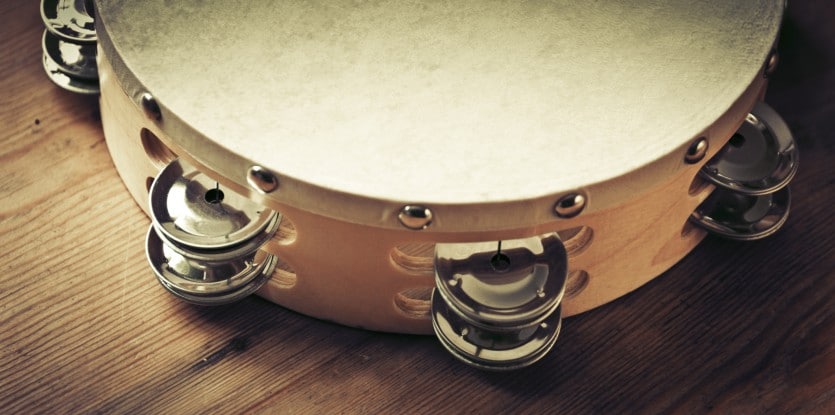Miriam the prophetess … took the tambourine in her hand; and all the women followed her with tambourines and dances.
And Miriam called to them: “Sing to G-d….”
Exodus 15:20-21
We don’t sing when we are frightened, despairing, sleepy, or after a heavy meal. We sing when we are pining after one we love, when we are yearning for better times, when we are celebrating an achievement or anticipating a revelation.
We don’t sing when we are complacent. We sing when we are striving for something, or when we have tasted joy and are climbing it to the heavens.
Song is prayer, 1
the endeavor to rise above the petty cares of life and cleave to one’s source. Song is our quest for redemption.
The Midrash 2 enumerates ten preeminent songs in the history of Israel—ten occasions on which our experience of redemption found expression in melody and verse. The first nine are the song sung on the night of the Exodus in Egypt, 3 the “Song at the Sea,” 4 the “Song at the Well,” 5 Moses’ song upon his completion of writing the Torah, 6 the song with which Joshua stopped the sun, 7 Deborah’s song, 8 King David’s song, 9 the song at the dedication of the Holy Temple, 10 and King Solomon’s “Song of Songs” extolling the love between the Divine Groom and His bride Israel.
The tenth song, says the Midrash, will be the shir chadash, the “new song” of the ultimate redemption: a redemption that is global and absolute; a redemption that will annihilate all suffering, ignorance, jealousy and hate from the face of the earth; a redemption of such proportions that the yearning it evokes, and the joy it brings, require a new song—a completely new musical vocabulary—to capture the voice of Creation’s ultimate striving.
Encore
The most well known of the ten songs of redemption is Shirat HaYam, the “Song at the Sea” sung by Moses and the children of Israel upon their crossing of the Red Sea. We recite this song every day in our morning prayers, and publicly read it in the synagogue twice a year: on the seventh day of Passover (the anniversary of the splitting of the sea and the song’s composition), and on a mid-winter Shabbat in the course of the annual Torah-reading cycle—a Shabbat which is therefore distinguished with the name Shabbat Shirah, “Shabbat of Song.”
The Song at the Sea praises G-d for His miraculous redemption of Israel when He split the Red Sea for them and drowned the pursuing Egyptians in it, and expresses Israel’s desire that G-d lead them to their homeland and rest His presence amongst them in the Holy Temple. It concludes with a reference to the ultimate redemption, when “G-d will reign for all eternity.” 11
Actually, there are two versions of the Song at the Sea—a male version and a female version. After Moses and the children of Israel sang their song, “Miriam the prophetess, the sister of Aaron, took the tambourine in her hand; and all the women followed her with tambourines and dances. And Miriam called to them: ‘Sing to G-d, for He is most exalted; horse and rider He cast in the sea…’” 12
The men sang, and then the women. The men sang, and then the women sang, danced and tambourined. The men sang—sang their joy over their deliverance, sang their yearning for a more perfect redemption—but something was lacking. Something that only a woman’s song like Miriam’s Song could complete.
Feeling and Faith
Miriam, the elder sister of Moses and Aaron, presided over the female encore to the Song at the Sea.
Miriam, named “Bitterness” because at the time of her birth the people of Israel entered the harshest phase of the Egyptian exile. 13 Miriam, who when the infant Moses was placed in a basket at the banks of the Nile, “stood watch from afar, to see what would become of him.” 14
It was Miriam, with her deep well of feminine feeling, who truly experienced the bitterness of galut (exile and persecution). And it was Miriam, with her woman’s capacity for endurance, perseverance and hope, who stood lonely watch over the tender, fledging life in a basket at the edge of a mammoth river, whose vigilance over “what would become of him” and his mission to bring redemption to her people never faltered.
The scene of the young woman standing watch in the thicket of rushes at the edge of the Nile, the hope of redemption persevering against the bitterness of galut in her heart, evokes the image of another watching matriarch—Rachel. As the prophet Jeremiah describes, it is Rachel who, in her lonely grave on the road from Bethlehem to Jerusalem, weeps over her children’s suffering in galut. It is she, more than the male patriarchs or leaders of Israel, who feels the depth of our pain; it is her intervention before G-d, after theirs has failed, which brings the redemption. 15
Miriam and her chorus brought to the Song at the Sea the intensity of feeling and depth of faith unique to womankind. Their experience of the bitterness of galut had been far more intense than that of their menfolk, yet their faith had been stronger and more enduring. So their yearning for redemption had been that much more poignant, as was their joy over its realization and their striving towards its greater fulfillment.
Today
The great Kabbalist, Rabbi Yizchak Luria (“The Ari,” 1534-1572), writes that the last generation before the coming of Moshiach is the reincarnation of the generation of the Exodus.
Today, as we stand at the threshold of the ultimate redemption, it is once again the woman whose song is the most poignant, whose tambourine is the most hopeful, whose dance is the most joyous. Today, as then, the redemption will be realized “in the merit of righteous women.” 16 Today, as then, the woman’s yearning for Moshiach—a yearning which runs deeper than that of the man, and inspires and uplifts it—forms the dominant strain in the melody of redemption.
Based on an address by the Rebbe, Shabbat Shirah 5752 (January 18, 1992) 17
Adapted from the teachings of the Lubavitcher Rebbe by Yanki Tauber







